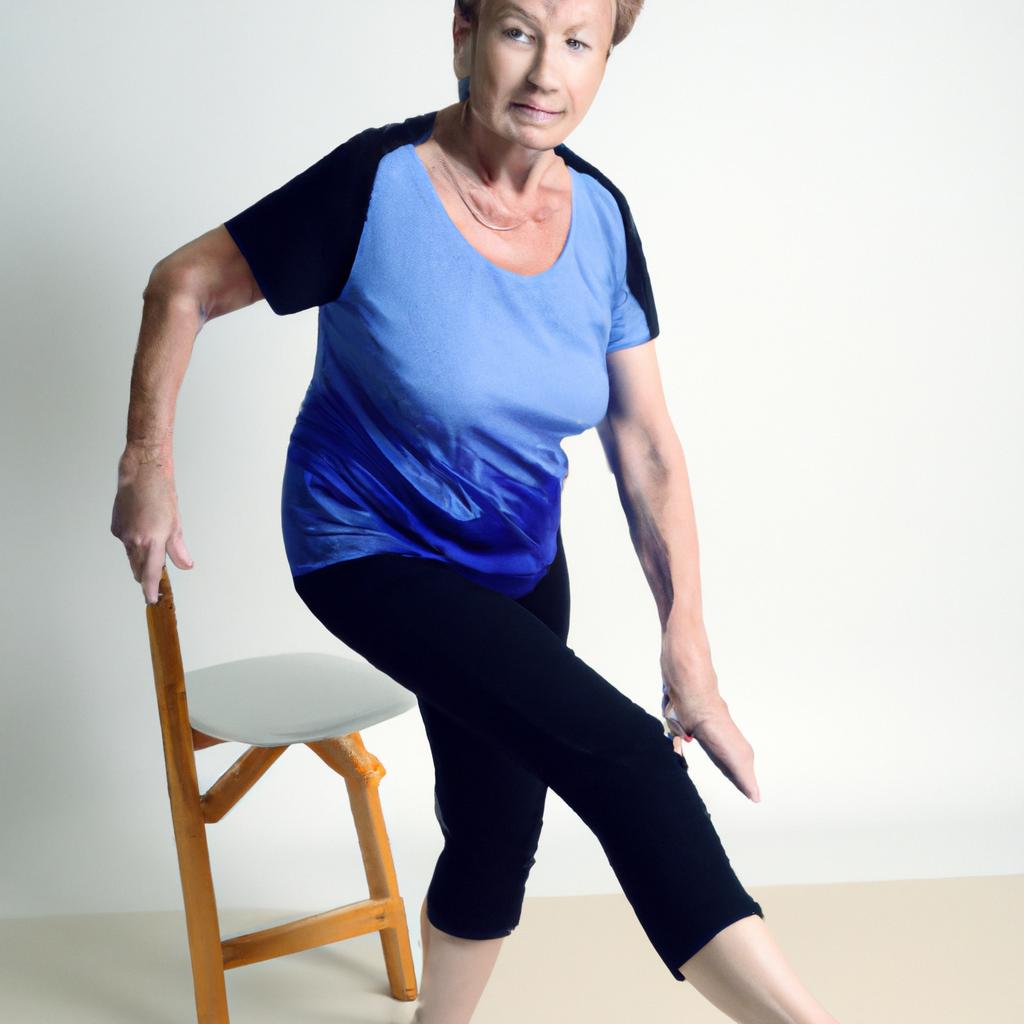**”Functional Training for Better Balance: Techniques to Enhance Stability and Prevent Falls in Older Adults”**
# Functional Training for Better Balance: Techniques to Enhance Stability and Prevent Falls in Older Adults
As we age, maintaining balance and stability becomes increasingly important for ensuring independence and reducing the risk of falls. Falls are one of the leading causes of injury among older adults, often resulting in severe consequences like fractures and loss of mobility. Functional training, a form of exercise focused on movements that mimic everyday activities, can play a crucial role in enhancing balance and stability. In this blog post, we will explore various techniques that can help older adults improve their balance, along with nutrition and exercise advice to support their journey.
## Understanding Functional Training
Functional training involves exercises that improve the body’s ability to perform daily activities. Unlike traditional weightlifting, which isolates specific muscle groups, functional training engages multiple muscle groups and promotes coordination, flexibility, and strength. This holistic approach is particularly beneficial for older adults, who may face challenges in performing tasks such as walking, climbing stairs, or getting up from a seated position.
### Key Principles of Functional Training
1. **Multidimensional Movements**: Functional training incorporates movements that require balance, coordination, and strength, such as squatting, lunging, and reaching.
2. **Core Stability**: A strong core is essential for maintaining balance. Functional training often includes exercises that engage the abdominal and back muscles to support stability.
3. **Body Awareness**: These exercises enhance proprioception, which is the body’s ability to sense its position in space, leading to improved balance and coordination.
## Nutrition Tips for Better Balance
Nutrition plays a vital role in overall health and stability. A balanced diet can support muscle strength, bone health, and energy levels—all crucial for maintaining balance.
### Essential Nutrients
1. **Calcium and Vitamin D**: These nutrients are critical for bone health. Incorporate dairy products, leafy greens, and fortified foods for calcium, and consider fatty fish or fortified cereals for vitamin D.
2. **Protein**: Adequate protein intake supports muscle maintenance and repair. Include lean meats, beans, legumes, and nuts in your diet.
3. **Hydration**: Staying hydrated is essential for maintaining physical performance. Aim for at least eight glasses of water per day, adjusting for activity levels.
### Sample Foods for Balance
– **Leafy Greens**: Spinach, kale, and other greens are rich in calcium and help maintain bone density.
– **Fatty Fish**: Salmon and mackerel are excellent sources of omega-3 fatty acids, which have been linked to improved muscle function and reduced inflammation.
– **Whole Grains**: Foods like brown rice and quinoa provide complex carbohydrates for sustained energy, supporting physical activity and exercise.
## Exercise Advice for Enhancing Balance
When it comes to exercise, a tailored approach is necessary for older adults. Here are some effective exercises that can enhance balance and stability:
### Balance Exercises
1. **Single-Leg Stands**: Stand on one leg for 10-30 seconds, gradually increasing the time as your balance improves. You can hold onto a chair for support if needed.
2. **Heel-to-Toe Walk**: Walk in a straight line, placing the heel of one foot directly in front of the toes of the other foot. This exercise challenges your stability and improves coordination.
3. **Tai Chi**: This gentle form of martial arts emphasizes slow, controlled movements and can significantly improve balance and stability.
### Strength and Flexibility Exercises
1. **Chair Squats**: Stand in front of a chair and lower yourself until you almost sit down, then rise back up. This exercise strengthens the leg muscles critical for maintaining balance.
2. **Leg Raises**: While seated or standing, raise one leg to the side and hold for a few seconds. This strengthens the hip muscles, which are vital for stability.
3. **Stretching**: Incorporate stretching exercises to maintain flexibility. Focus on the legs, hips, and back to support a full range of motion.
## Health Benefits of Improved Balance
Improving balance through functional training not only reduces the risk of falls but also provides numerous health benefits for older adults.
### Enhanced Quality of Life
Better balance and stability allow individuals to engage in daily activities with confidence, promoting independence and overall well-being.
### Reduced Injury Risk
Engaging in balance training can significantly lower the risk of falls and related injuries, such as fractures, thereby enhancing long-term health and mobility.
### Improved Mental Health
Exercise, including balance training, releases endorphins that can improve mood and reduce feelings of anxiety and depression, contributing to better mental health.
## Conclusion
Functional training offers a comprehensive approach for enhancing balance and stability in older adults, significantly reducing the risk of falls while promoting overall health and well-being. By incorporating targeted exercises and maintaining a nutritious diet, older adults can improve their strength, flexibility, and confidence, ultimately leading to a more active and independent lifestyle. Prioritizing balance training is not just about preventing falls; it’s about enriching life in the golden years.















Post Comment